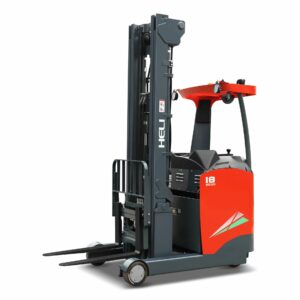Everyone knows how to choose a car. After all, most people drive them every day. But How to choose a forklift?
To most people, forklifts appear to be all the same, but when they get down to details, they come with a bewildering variety of options and accessories, lift heights and classes.
So, How to choose a forklift?
What is important to remember is that the right forklift for you is the one that does the job you need, reliably and at a minimum of expense. For 90% of buyers this will be a general purpose, LPG powered forklift with a capacity of 1.5 to 3 tonnes. These are the most common types of units available in Australia, and with good reason. Think of them like a Holden Commodore, reliable and flexible, able to be used in a wide variety of applications. But by no means are they the only type of units available.
Before you start shopping, the basic questions you need to answer about your forklift requirements are:
What surface or environment?
Indoor, outdoor, gravel, concrete, mud/grass? Generally, electric forklifts are 
How high do you need to lift?
This is, really what forklifts are for. To lift goods and move them, either into racking or onto trucks. Many people only need to lift one metre off the ground, and just about any forklift you can buy will do that. Others have racking, and if you do, measure the topmost rack and add 200mm to enable the bottom of the pallet to clear the rail. That is the lift height you need to look for when purchasing.
Capacity
Forklift capacity is measured in tonnes. Generally there is some rounding up, eg a 2.5 tonne forklift will often be rated to lift 2.42 tonnes. In addition lift capacity decreases logarithmically with height and length. The larger a load and the higher it goes, the lower the available capacity. Weigh and measure the heaviest pallet or object you intent to lift, and measure your maximum lift requirements. All forklifts should have a load plate that will determine if your requirements can be met.
Example
Company A needs to lift 800kg onto a 3 metre rack. They should only need a 1 tonne forklift right? A 1 tonne forklift would usually do however the item in question is a very large box, 1800mm deep. This means that the load centre is 900mm, not the 600mm quoted by the manufacturer. The load is therefore much harder for the forklift to lift, and available capacity is reduced from 1 tonne to about 600kg, inadequate for the job.
The above example shows why capacity isn’t as simple as determining the weight of your goods. Weight, size and lift height are all equally important factors
Unloading Containers or going under low doorways?
If clearance height is an issue, then you will need what is commonly called a container mast. Available in two or three stage (in forklift parlance, a section of mast is called a stage). This in turn will limit the overall height that you can lift, the maximum height you can achieve on a container mast forklift is approximately 4.3 metres. If your racking is higher than this and you need to unload containers, you will probably need 2 different units.
Aisle width restriction or turning circle
Typical factory racking is designed to allow most forklift equipment to load and unload easily. However if you have narrow aisles or tight turns, you may need a more compact unit, such as a reach truck. Reach trucks come in a variety of brands and are exceptionally high lifters and very compact, however there disadvantages are a more complex control scheme, no weatherproofing and a higher initial cost. Other options can include a walk-behind stacker or compact conventional forklift (known as a ‘stubbie’).
Attachments / other special features
Forklifts are designed to lift pallets, however they can be adapted to a wide variety of applications. We can supply sideshifts (useful for tight spaces), fork positioners (if you need to lift different sized pallets), rotators for drums and rolls, carpet poles for carpet or fabric, jibs for lifting engine blocks and the like and many, many more types of attachments. The most common are sideshifts, which are highly sought after as they allow the tynes to be repositioned on the fly, increasing loading speed. The best attachments to look for are the ones you need, there is no point in paying for something you don’t really need.
Cost
This is what people generally consider first, and while it is very important to stay within budget, it’s more important to end up with a forklift that does the job you need it to do. Cost will dictate the features you end up with, the weight capacity and the age of the unit. The simplest way to evaluate your needs is to think of it like this:
- Age/Quality
- Features
- Price
Now pick two, e.g. – you can get a cheap forklift in good condition, but it may only lift 1.5 tonnes and have no sideshift. Or you can get a model with more hours that lifts more weight and has good specifications at a good price but it will be older and in poorer condition. You must carefully consider what specifications are important to you and balance these against the cost of the unit. Look for an upcoming post on the various purchasing methods available.
Before comparing units, try to make a list of all your ‘must haves’ and all your ‘would like to have’ features before you begin looking, like this
Must Have
- 3.5 metre lift height
- Cost under $10,000
- 2 tonne minimum capacity
- LPG
Would like to have
- Sideshift
- Solid Tyres

